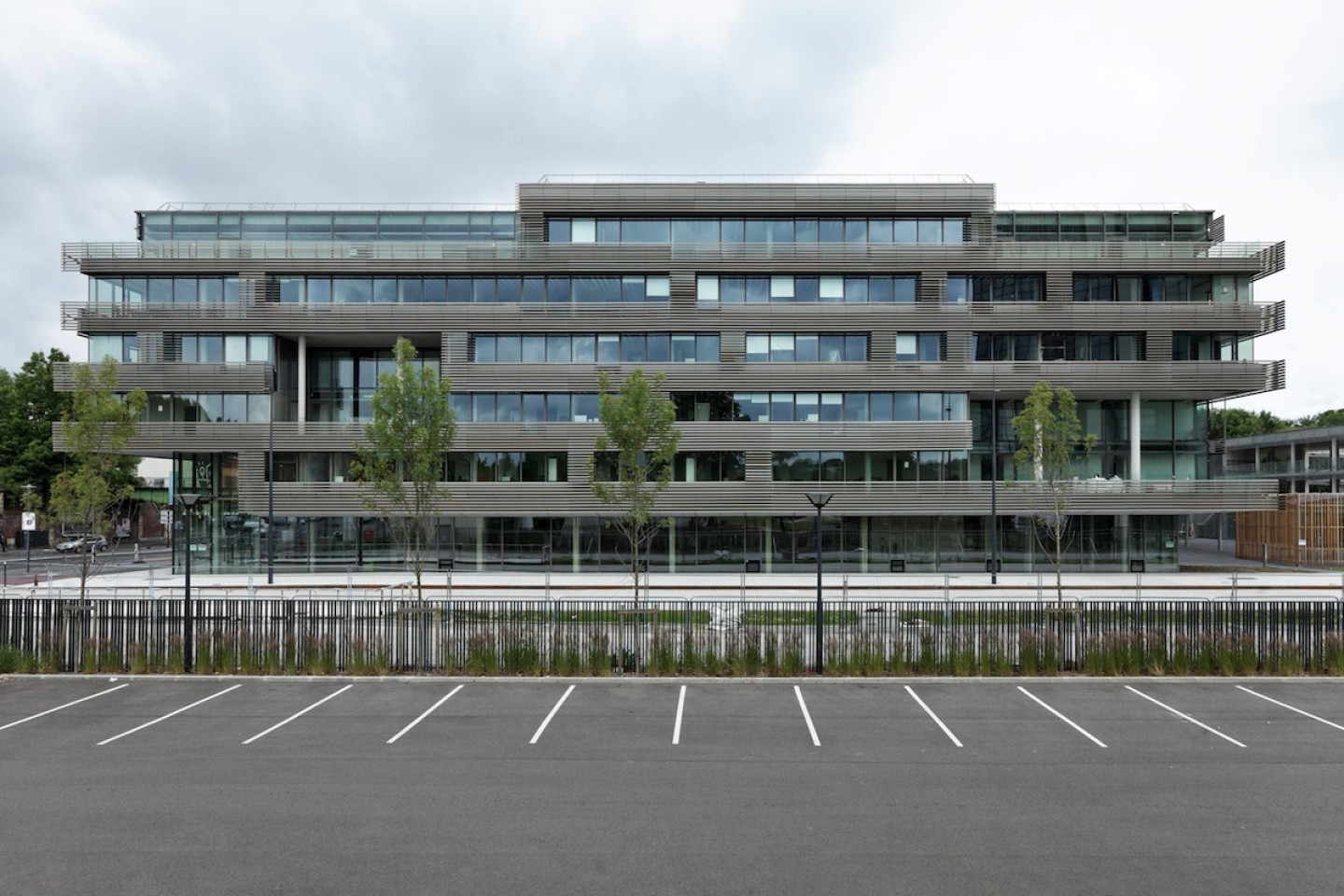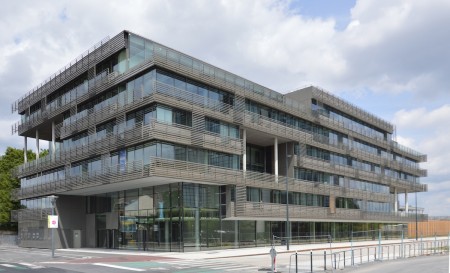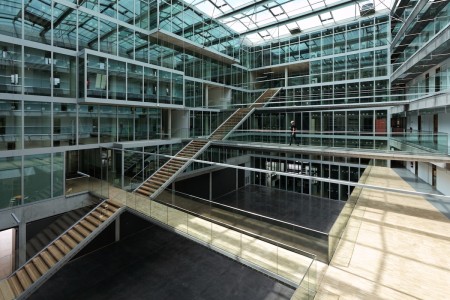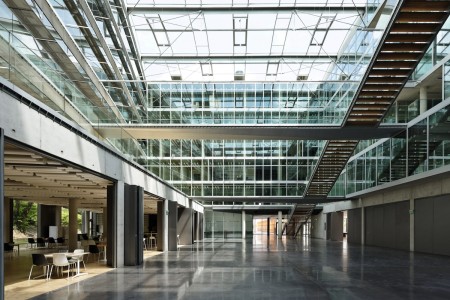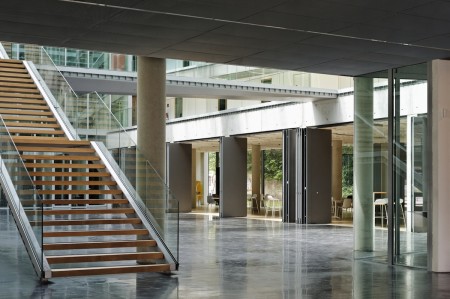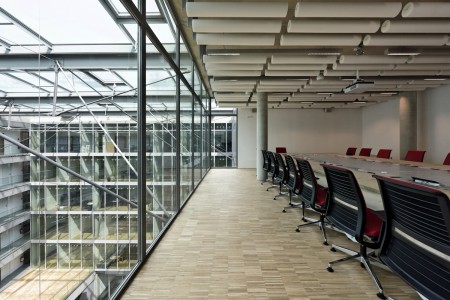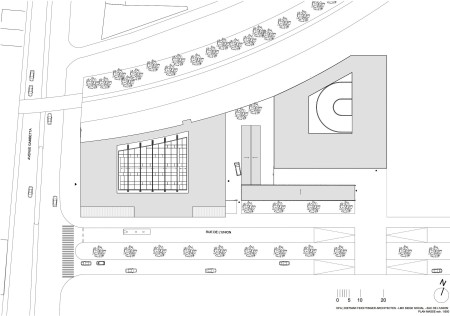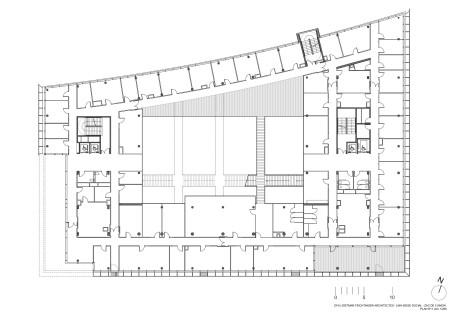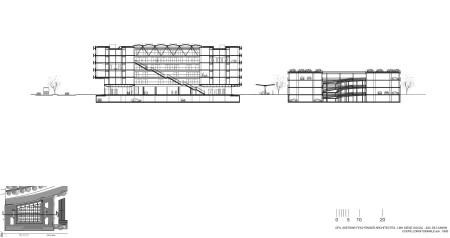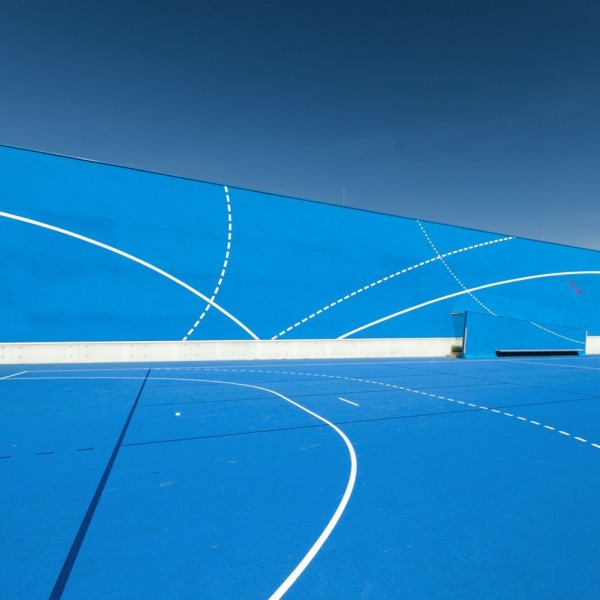A building representing the values of its owner.
The new headquarters of the organization for social housing in the metropolitan area of Lille (LMH) is located on the boulevard Gambetta in Tourcoing, a major road connecting Lille and its surrounding communities.
A new road perpendicular to the boulevard, the Rue de l’Union, is the central axes of a new urban development area situated on a former industrial site for textile industries.
The site is oriented towards the road crossing. It is the first building of the new district forming its entrance confronting the existing city. A large park integrating an existing channel and a high environmental ambition are key issues for the quality of the new neighborhood.
Accessibility by public transport is assured by the metro and its station nearby.
The existing urban context is relatively poor including a hotel complex built in the seventies without significant architectural quality.
The new building for LMH affirms its presence in the urban context by its dimension, the new architectural expression searching for lightness and transparency avoiding monumentality. Large outdoor terraces sculpture the volume. Transparency and openness allow addressing the building to the population and the tenants of the social housing. The large hall oriented towards the boulevard is fully glazed. It includes a showroom promoting future housing projects.
An open central space forms the core of the building. It is an inner court protected by a glass roof including a monumental stair and steel bridges on each level as the main vertical circulation in the building.
Its generous dimension is unexpected. It provides the space for informal meetings, exhibitions and organized events. The restaurant area in the north and the meeting area for seminaries in the south complete the central space. Mobile divisions allow dividing the southern part in several working areas.
The untreated concrete slabs are used to store energy by using its mass. Integrated water pipes close to the surface allow active change of temperature and provoke refreshing or heating according to the season by radiation.
All offices can be naturally ventilated by a horizontally opening window. This type of opening allows free cooling at night assuring protection from intrusion.
Natural light is privileged for all areas. Sun protection is provided on the south façade by horizontal aluminum elements situated above the windows allowing free sight and protection simultaneously.
The ventilation ducts, electrical installations are part of the design. These elements are directly accessible or covered by a metal mesh. The main materials are concrete and steel for the primary structure, wood and glass.
The use of color is reserved to raw materials according to the architectural intention to create a setting for the people using the building.
Suspended circular acoustic elements assure acoustic absorption. In order to free the concrete slab for its thermal qualities artificial light is also suspended.
The offices are arranged around the atrium on five floors. Meeting rooms and open recreation areas animate the inner façade providing bow windows into the court. Large wooden terraces are provided on each level. These outdoor areas can be used for meetings, spontaneous and informal, as well as for moments of rest and recreation.
A multistory car park in the east of the building is designed as the future extension of the building. Its floor height allows the transformation into offices. The central circular ramp is made of steel and can easily be dismounted to offer a central space, an atrium similar to the main building.
A storage building for bicycles along the Rue de l’Union completes the complex. It forms a filter to the delivery area by its wooden vertical cladding.
